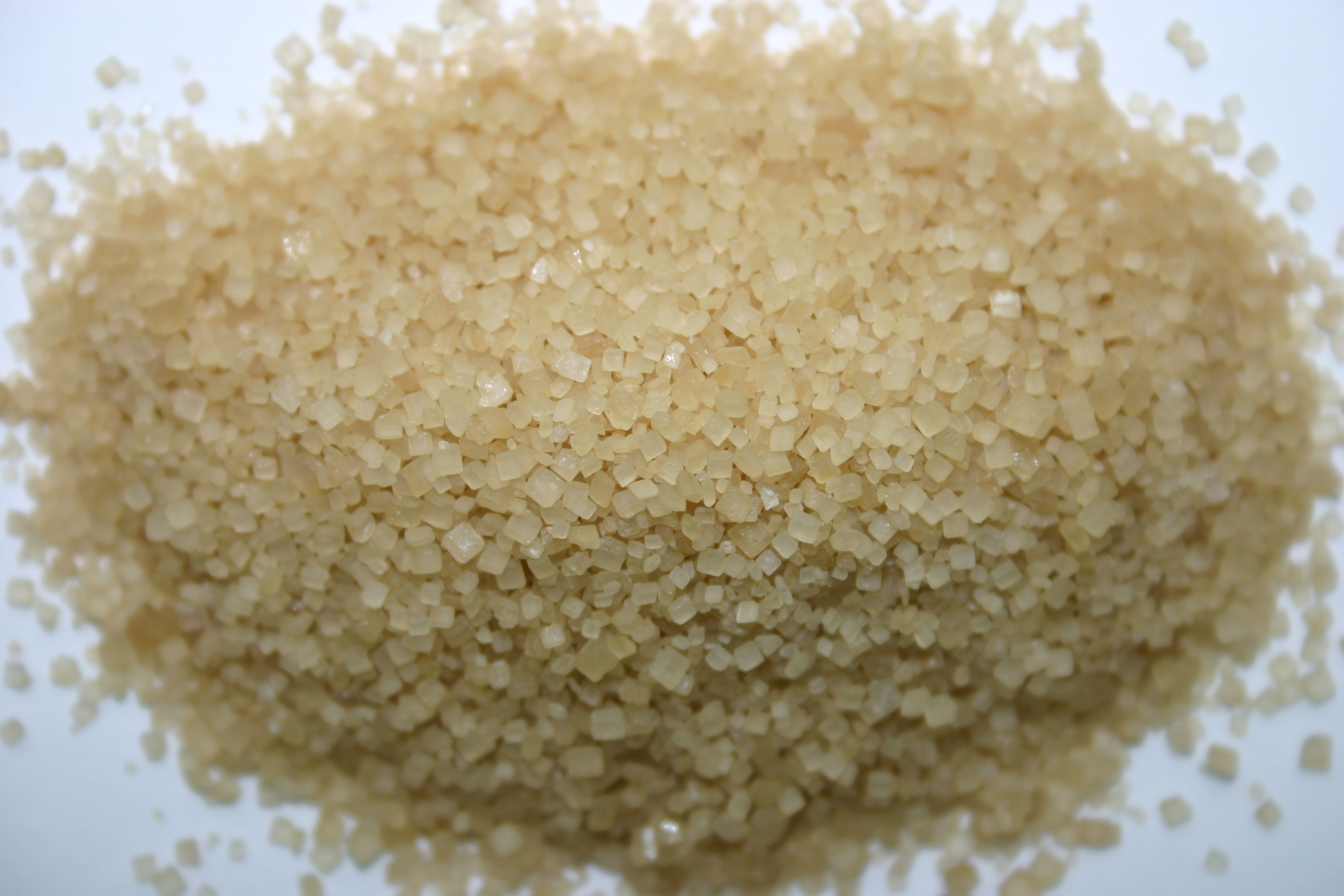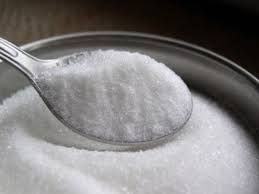Extraction
Raw sugar is the product from which refined sugars are made. It is also consumed in some parts of the world as a foodstuff in its own right. The bulk of the world’s sugar exports are made up of raw sugar, the most notable exporter of raw sugar being Brazil, which exports VHP raw sugar in massive amounts, often exceeding twenty million tons, every year.
Raw sugar is extracted from sugar cane or sugar beet. Sugar cane is the primary source of raw sugar, as it is the most commonly grown sugar source in the world. Sugar cane grows well in tropical and subtropical climates, such as those in Brazil, India, and Thailand. Brazil and India are the world’s top two sugar producing nations in the world, and Thailand is the world’s second largest sugar exporting nation. Sugar beet is grown as a sugar source in countries which have less clement weather, such as Russia, which refines all its domestic sugar from sugar beet.
The ways in which sugar is extracted from sugar cane and sugar beet are quite different. Sugar cane is harvested in the field, then taken to the mill, where the leaves are stripped (if they have not already been burned off before harvesting), and the cane is washed. The cane is then shredded and chopped before being fed through mills which crush it, squeezing the sucrose rich juice out of the cells of the cane.
The sugar cane juice is then fed into a tank, where excess pieces of cane which slipped through with the juice are skimmed off the top of the juice. What happens next depends on whether or not the sugar is to be processed into VHP sugar (very high pol sugar), or if it is simply to be raw sugar. Some mills simply boil the juice to concentrate the sugar, then allow it to cool. The sucrose in the sugar crystallizes, along with glucose, fructose, minerals, and a fair amount of biological contaminants, and is then sold to refineries which refine it further.
Sugar beets are harvested from the fields, washed, and then sliced very thinly. Unlike sugar cane, they are not crushed, but are fed into a machine called a hot water diffuser. The hot water diffuser streams hot water past the slices of sugar beet, dissolving the sucrose in the beet flesh, and carrying it away for processing.
Extracting sugar crystals from sugar beet is done in the same way as with sugar cane, the juice is boiled and allowed to crystallize into raw brown sugar.
Brown Sugar
Most raw sugar is not consumable, however there are certain types of raw sugars which are consumed in various regions throughout the world, and sometimes even in developed countries. The raw consumable sugars which are approved for sale in developed countries are purified before being sold to the consumer, so they are safe to eat even though they have not been refined.
Three of the most popular forms of consumable raw sugar in the developed world are Demerara sugar, Muscovado sugar, and Turbinado sugar. These are all unique sugars which differing tastes, textures, and applications.
Demerara sugar is a sugar hailing from Guyana. It has lovely large golden crystals and a toffee like taste that has made it exceedingly popular for use in hot drinks such as tea and coffee. Demerara sugar is produced from the freshly crushed juice of sugar cane, and is not separated from the molasses, which is what causes it to be full of flavor, not to mention healthy minerals.
Muscovado sugar is a very dark brown crumbly sugar with a high moisture content. Muscovado sugar is a product of Barbados, and is hugely popular in baking for both the rich flavor it imparts, and the extra moistness it brings to baked goods. Muscovado sugar is produced by baking cane juice, then purifying it with coconut milk or lime juice.
Turbinado sugar is a large grain raw sugar similar to Demerara sugar, but with a darker color and higher moisture content. Turbinado sugar is also a very popular condiment in coffee and tea because of its unique flavor and aesthetically pleasing appearance.
Granulated sugars are used at the table to sprinkle on foods and to sweeten hot drinks and in home baking to add sweetness and texture to cooked products. They are also used as a preservative to prevent micro-organisms from growing and perishable food from spoiling as in jams, marmalades and candied fruits.
Milled sugars are ground to a fine powder. They are used as icing sugar, for dusting foods and in baking and confectionery.
Screened sugars are crystalline products separated according to the size of the grains. They are used for decorative table sugars, for blending in dry mixes and in baking and confectionery.
Brown sugars are granulated sugars with the grains coated in molasses to produce a light, dark or demerara sugar. They are used in baked goods, confectionery and toffees.
Sugar cubes are white or brown granulated sugars pressed together in block shape. They are used to sweeten drinks.
Liquid sugars are strong syrups consisting of 67% granulated sugar dissolved in water. They are used in the food processing of a wide range of products including beverages, ice cream and jams.
Invert sugars and syrups are blended to manufacturers specifications and are used in breads, cakes and beverages for adjusting sweetness, aiding moisture retention and avoiding crystallization of sugars.
Syrups and treacles are dissolved invert sugars heated to develop the characteristic flavors. Treacles have added molasses. They are used in a range of baked goods and confectionery including toffees and licorice.
Low calorie sugars and sweeteners are often made of maltodextrin with added sweeteners. Maltodextrin is an easily digestible synthetic polysaccharide consisting of short chains of glucose molecules and is made by the partial hydrolysis of starch. The added sweeteners are often aspartame, saccharin, stevia or sucralose.
Polyols are sugar alcohols and are used in chewing gums where a sweet flavor is required that lasts for a prolonged time in the mouth.
In winemaking, fruit sugars are converted into alcohol by a fermentation process. If the must formed by pressing the fruit has a low sugar content, additional sugar may be added to raise the alcohol content of the wine in a process called chaptalization. In the production of sweet wines, fermentation may be halted before it has run its full course, leaving behind some residual sugar that gives the wine its sweet taste.

Semi-refined Cane Sugar. The ligther the color, the more refined.
VHP Sugar
VHP - Very High Polarization - sugar is processed more than normal raw sugar. As with normal raw sugar, the raw sugar juice is boiled and allowed to crystallize, but it is then sent into a centrifugal chamber, which drives off the liquid content, or molasses, and leaves light brown sugar crystals behind. These sugar crystals have far less contamination in them than normal raw sugar, and overall the sugar produced by this process has a nice high sucrose content. VHP sugar is defined as being sugar with sucrose content of 99.4 % or more.
The molasses from this first cycle of processing is called first molasses, and it retains a relatively high sucrose content. This first molasses can be sold as is, or in many cases it will be processed once more, producing more sugar, known as ‘B’ sugar, and second molasses, which is much more bitter in flavor due to the reduced sugar content.
The process is repeated one more time, yielding ‘C’ sugar, and final, or ‘blackstrap’ molasses. Blackstrap molasses is popular amongst health food aficionados, vegetarians, and pregnant women, as it contains concentrated amounts of iron, not to mention magnesium, potassium, and calcium.
The ‘B’ and ‘C’ sugar is then dissolved into solution and processed one more time in order to produce more VHP sugar.The TU is heavily dependent upon "ash points", which are defined as "Conductivity ash, % , expressed to three decimal places" (British Sugar Corp., Central Laboratory, ICUMSA Headquarters). Further used to weight the TU is "reflectance Grade Colour" and "Solution Colour" or "Filtered Colour" as it is referred to, which have formulas for determination equally confusing as the one for "Ash Points". Thus, as you see, this is not easily understood by the novice.
VHP sugar was invented in 1993 by Brazilian sugar scientists, and is now the most popular raw sugar export in the world. This is because buyers get more sugar per shipment when they purchase VHP, due to the fact that it has such a high sucrose content. It is also easier and quicker to refine than other sugars, and the bulk of ICUMSA 45 refined sparkling white sugar is made from VHP raw sugar for this reason.

White Refined Sugar Icumsa 45. Icumsa 45 is the highest quality of sugar from Brazil. Compared to most other producers of Icumsa 45 the reliability of consistent quality is superior from Brazil.
Refined Sugar
Cane sugar requires further processing to provide the free-flowing white table sugar required by the consumer. The sugar may be transported in bulk to the country where it will be used and the refining process often takes place there.
- The first stage is known as affination and involves immersing the sugar crystals in a concentrated syrup which softens and removes the sticky brown coating without dissolving them.
- The crystals are then separated from the liquor and dissolved in water.
- The resulting syrup is either treated by a carbonatation or a phosphatation process. Both involve the precipitation of a fine solid in the syrup and when this is filtered out, a lot of the impurities are removed at the same time.
- Removal of colour is achieved by either using a granular activated carbon or an ion-exchange resin.
- The sugar syrup is concentrated by boiling and then cooled and seeded with sugar crystals causing the sugar to crystallize out.
- The liquor is spun in a centrifuge and the white crystals are dried in hot air, ready to be packaged or used. The surplus liquor is made into refiners' molasses.
The International Commission for Uniform Methods of Sugar Analysis sets standards for the measurement of the purity of refined sugar, known as ICUMSA numbers; lower numbers indicate a higher level of purity in the refined sugar.

